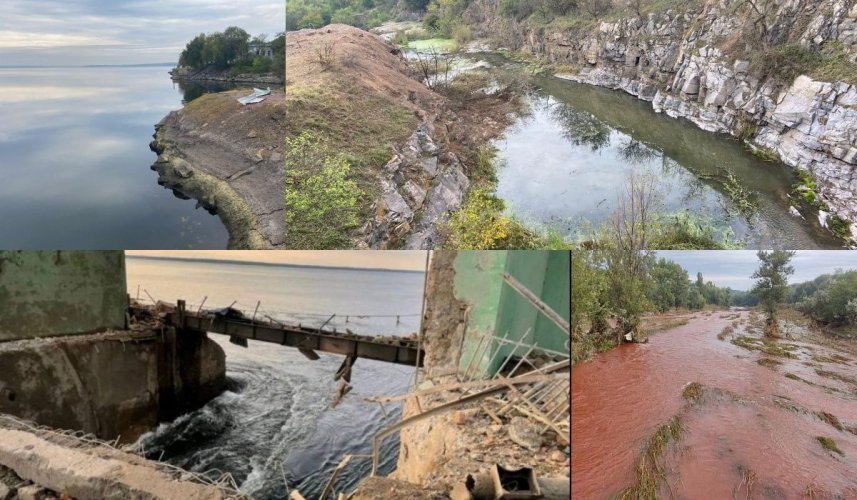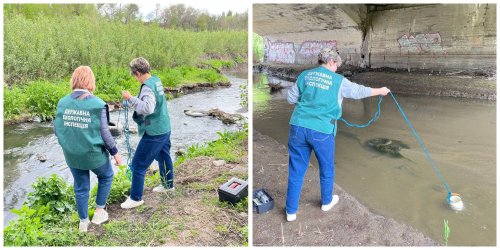In Kryvyi Rih, eco-activists investigated the water quality in the Ingulets River half a year after the rocket attack on the dam of the Karachuniv Reservoir.
Currently, the water in the river has "mediocre" quality due to the increased content of dissolved salts, water hardness compounds, nitrate and nitrite ions, reports the public organization "Enough to poison Kryvyi Rih" on Facebook.
It is noted that due to a missile strike in September 2022, a significant leak of water occurred at the dam of the Karachuniv Reservoir, which flooded about 200 houses. In addition, fish died in Ingulka, and the river itself turned red.

"Then, as a team, we immediately investigated the quality of the water. At the time, phosphate and nitrate contamination was a concern. In half a year, our team took water samples from Ingulets again to check its quality," said the DTKR, adding that environmental safety expert Maksym Soroka was brought in to interpret the results.
Eco-activists found that pollutant concentrations have now decreased, but the water quality category has not changed. Thus, the content of suspended solids, nitrogen compounds and phosphates decreased.
They noted that this confirmed the theory about the contamination of the Ingulets River by the contents of flooded sewage networks and cesspools on private grounds.
The study showed that the rocket strike and reconstruction works on the Karachuniv reservoir dam had no long-term effect on the water quality of Ingulets within the Kryvyi Rih floodplain. Despite significant man-made and social consequences, the missile strike and subsequent reconstruction work had a limited and non-catastrophic effect on the river ecosystem.
Eco-activists emphasized that the level of water quality is not environmentally safe. However, this may be a consequence of anthropogenic influence and water pollution in the Ingulets basin.
Earlier, EcoPolitic wrote, that on September 14, Russian troops bombarded the city of Kryvyi Rih with 8 "Kinzhal" and "Iskander" cruise missiles, which damaged the dam of the Karachuniv Reservoir. And on September 16, the river turned red.
As EcoPolitic reported earlier, in Kryvyi Rih, environmental activists of the DTKR took water samples from the Ingulets River, which turned red after the Russians shelled the hydraulic structure. The water was considered relatively safe.





